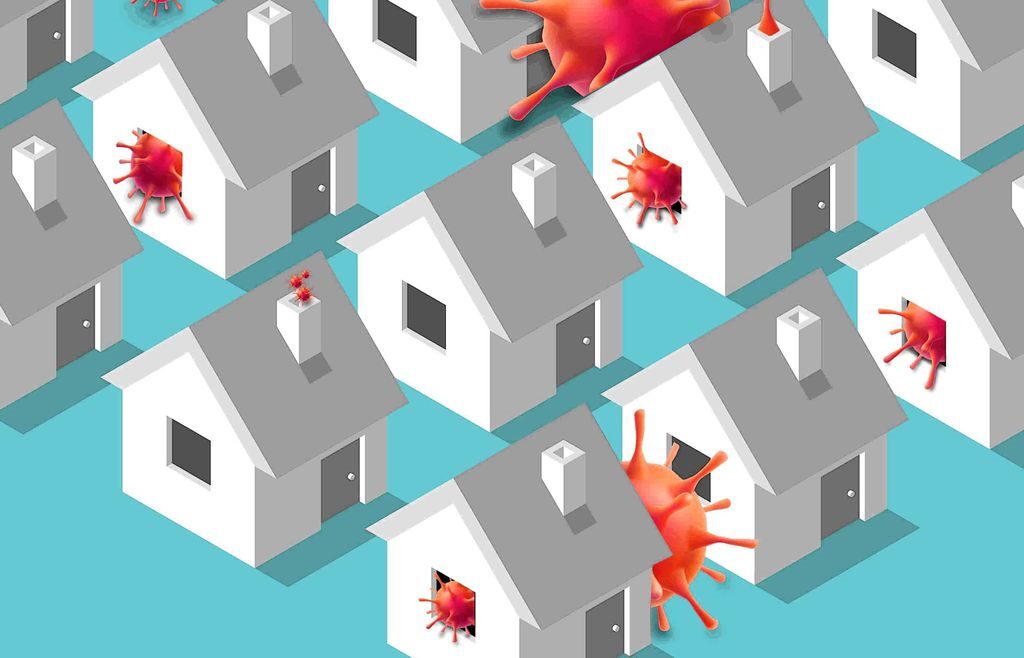In this op-ed, Kenneth Wener, MD (Infectious Diseases, LHMC) and Mary LaSalvia, MD (Infectious Diseases, BIDMC) join infectious disease leaders across Boston in encouraging local residents to follow Governor Baker’s newly updated COVID-19 guidelines.
Boston Globe – November 12, 2020
Boston infectious disease specialists: Baker’s COVID-19 guidelines can get Mass. back to work and school

As infectious diseases specialists, we are concerned about how to balance COVID-19 prevention practices with the economic and societal needs for critical services and institutions like schools, restaurants, and businesses. Massachusetts Governor Charlie Baker recently announced new COVID-related restrictions in the state — curfews, tighter limits on gatherings, masks in public. Some have argued these new measures are too strict, threatening jobs, businesses, and personal freedom. Others are concerned that they don’t go far enough, calling for shutting down businesses, schools — even issuing a stay-at-home order — to prevent or mitigate the surge. We support the governor’s targeted measures for now, but this means we each must make responsible decisions in the weeks ahead.
Through the tireless work of state contact tracers, an estimated 50 percent of all COVID-19 cases in Massachusetts have been successfully traced to a prior infected contact. Recently released data on the dashboard from the Department of Public Health demonstrate that the vast majority of traceable transmission clusters are occurring in small household gatherings. Certainly, there is inherent bias here; households are easiest to trace. Even so, there is something to be learned. In these settings, where people naturally let their guard down and are less likely to distance and mask, 8,972 confirmed infections have occurred among 4,731 clusters reported between Oct. 4 and Oct. 31. Long-term care facilities, including nursing homes — hit hard in the spring — follow as a distant second, with fewer than 150 clusters identified.
Notably, colleges and K-12 schools are doing remarkably well, with only 59 reported infections from 20 college clusters, and 75 infections reported in 30 clusters in K-12 schools statewide. To the extent they can be traced, even restaurants are faring better than we might have imagined, with 76 infections reported from 32 clusters over the last month. Collectively, these data suggest that the integrated mitigation measures — facial coverings, physical distancing, hand hygiene, contact tracing, and other environmental controls — are working when utilized outside the home.
With these data in hand, what is the best plan for mitigation?
It’s not clear that shutting down would stop or even control this spread. In fact, there’s a real chance such measures would have the opposite effect, prompting more congregating indoors in household or private settings.Baker’s order includes a statewide facial covering order, regardless of distance, which is much easier to interpret and enforce; a limited stay-at-home advisory, in effect from 10 p.m. to 5 a.m.; and new limits for the number of people who may gather in groups — up to 10 people indoors and 25 outdoors.
We anticipate that each of these interventions will help disrupt the transmission of the virus that causes COVID-19, which has killed about 240,000 nationwide and is expected to hit 396,000 by Feb. 1 if the United States continues its current strategy — and allows schools to remain open and our economy to continue functioning. Further, these measures permit the careful daytime socialization in schools and communities that can help deter the riskier gatherings that might otherwise ensue. Though following these additional rules will be difficult for many, they balance the public health benefits of keeping the population safe — and in school — with the need to maintain a strong economy to support all the residents of our state. Now the job turns to you, the public, to keep your homes safe, your gatherings limited, and to ensure that those entering your home who aren’t household members remain masked and distanced at all times, especially through the holiday season.
As we enter the ninth month of the COVID-19 pandemic in this nation, we are reminded that up to 90 percent of us remain unexposed to this virus and at risk of infection. The measures that we’ve been working so hard to follow have proved effective.
If we can weather the hard winter months that lie before us, we are confident that better days are ahead. Improved testing, new treatments, and perhaps even an effective vaccine are all on the horizon. We are with you and will continue to look to the science, follow the data, and be transparent in our evidence-based approach to health and protecting the public.

